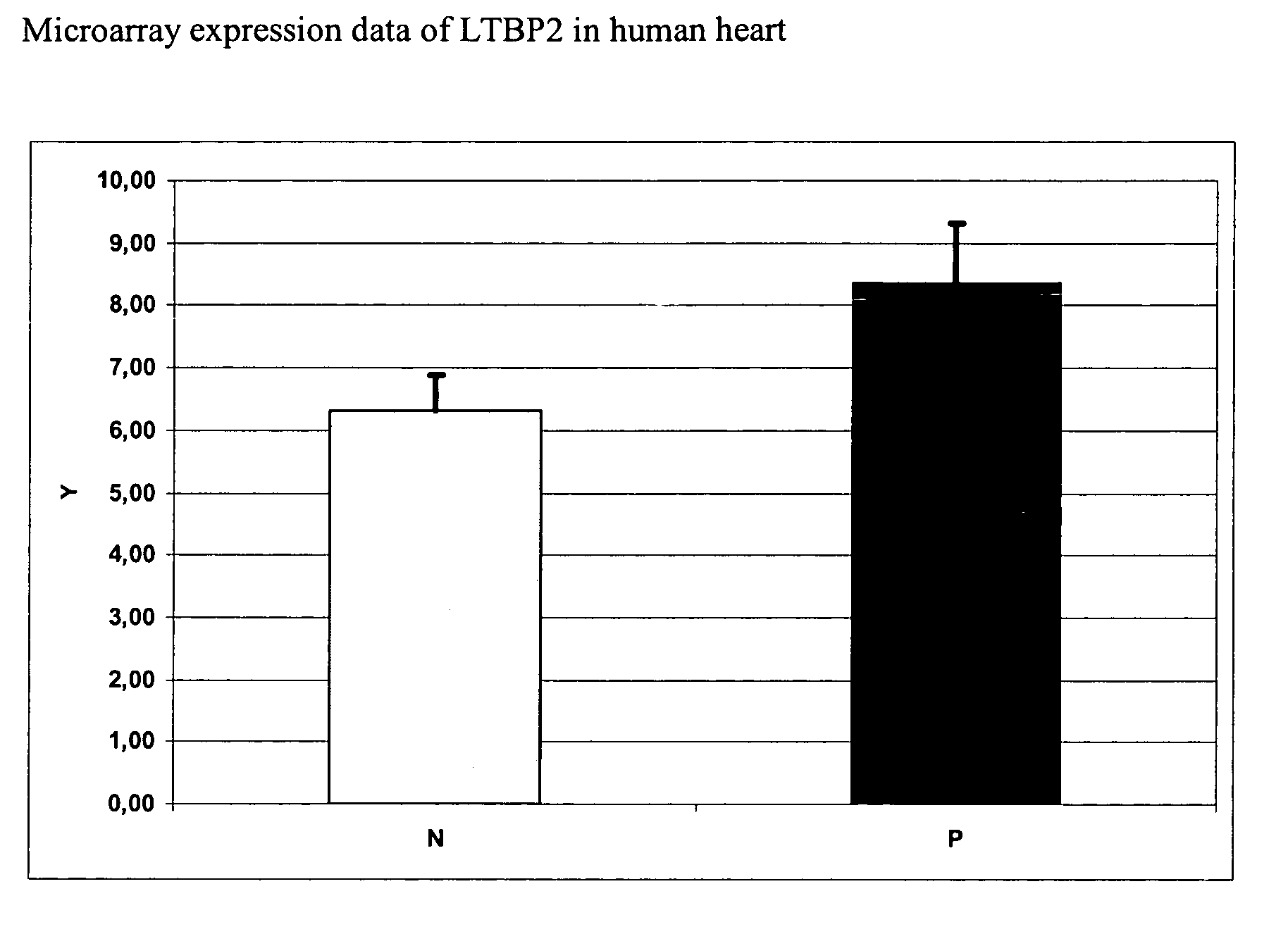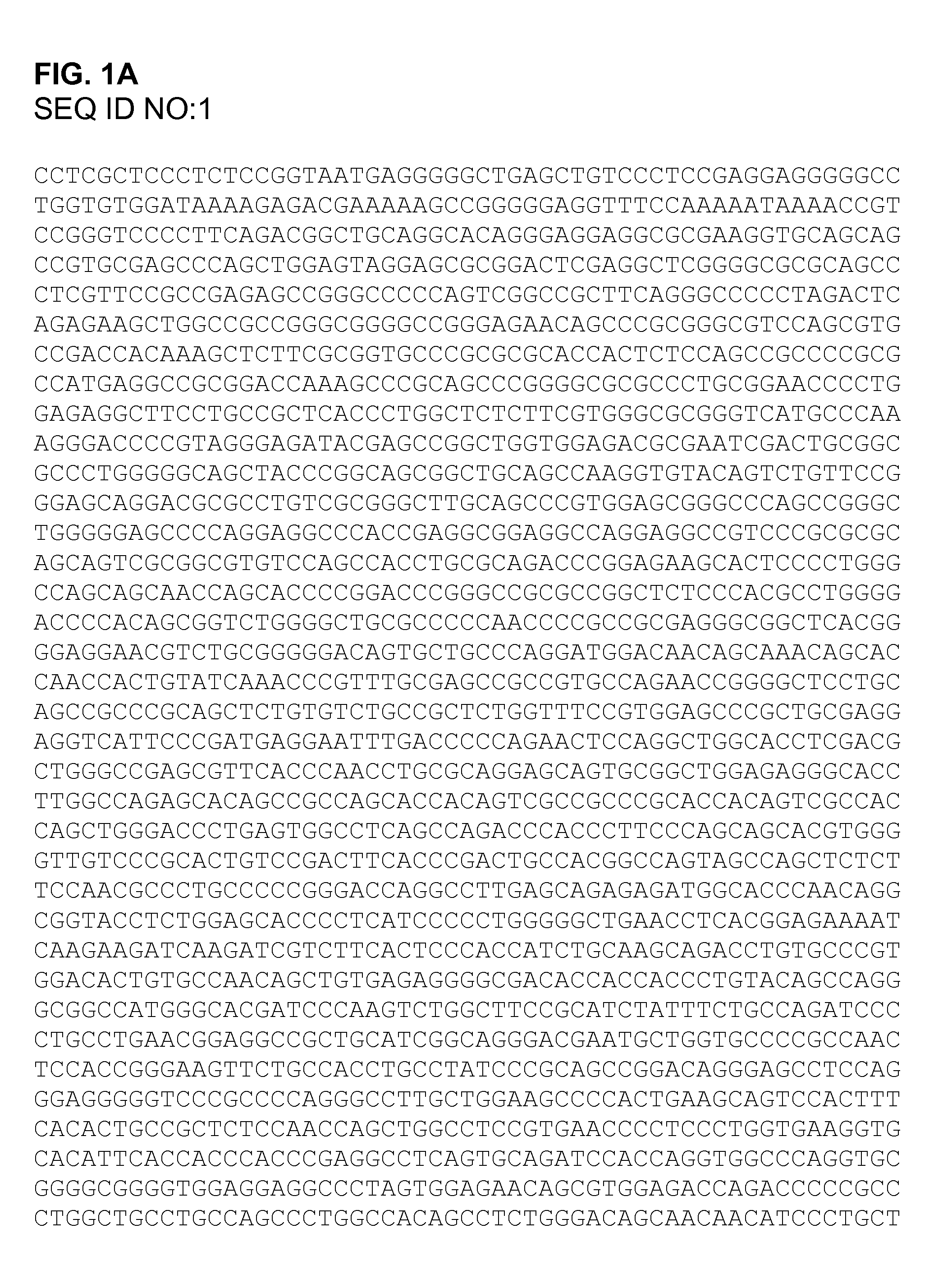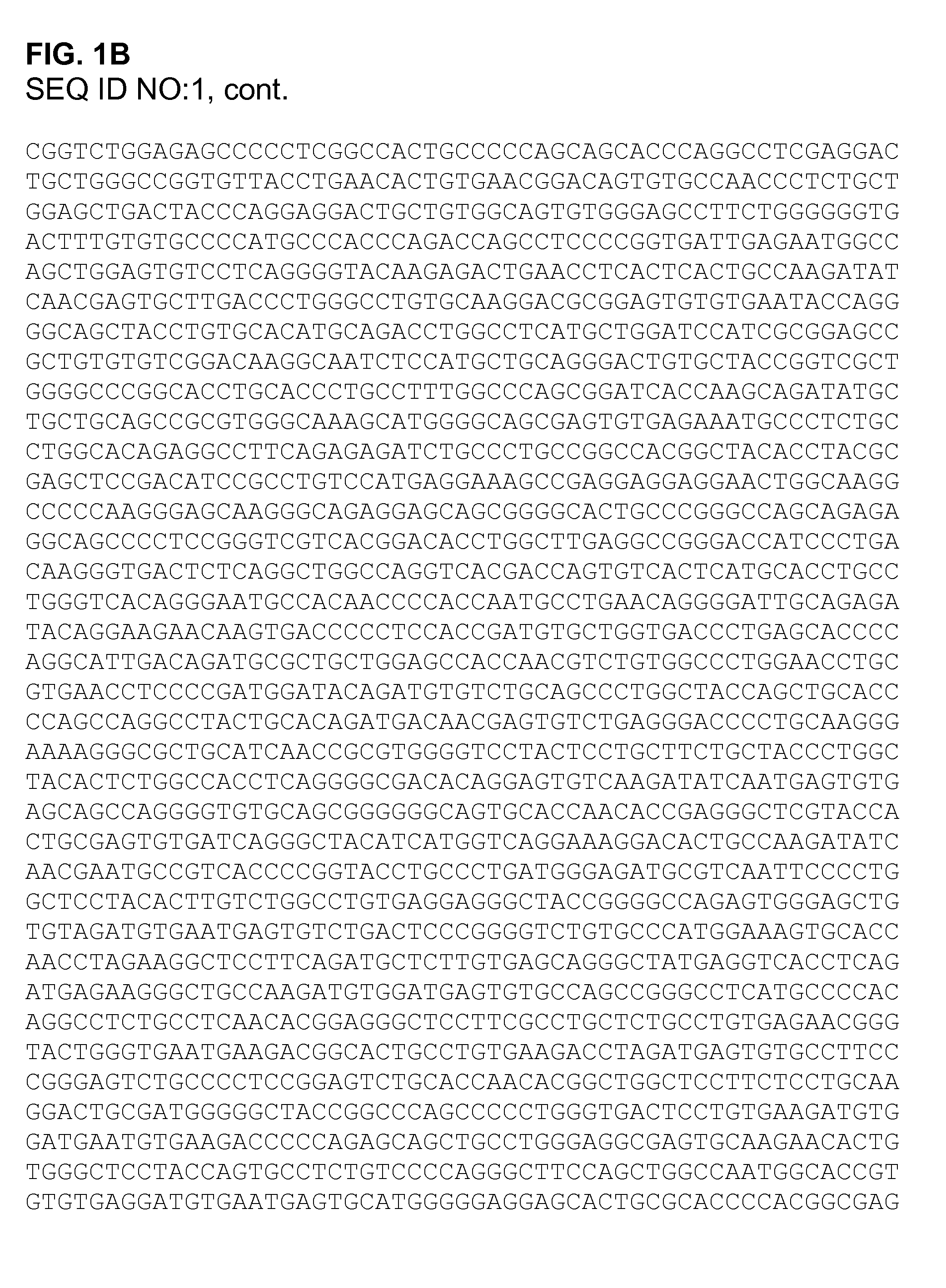LTBP2 as a biomarker and diagnostic target
a biomarker and diagnostic target technology, applied in the field ofmolecular biology, can solve the problems of embryonic lethality, further limited elucidation of the functional role of ltbp2,
- Summary
- Abstract
- Description
- Claims
- Application Information
AI Technical Summary
Benefits of technology
Problems solved by technology
Method used
Image
Examples
example 1
Search for Homologous Sequences in Public Sequence Data Bases
[0361]The degree of homology can readily be calculated by known methods. Preferred methods to determine homology are designed to give the largest match between the sequences tested. Methods to determine homology are codified in publicly available computer programs such as BestFit, BLASTP, BLASTN, and FASTA. The BLAST programs are publicly available from NCBI and other sources in the internet.
[0362]For LTBP2 the following hits to known sequences were identified by using the BLAST algorithm [Altschul S F, Madden T L, Schaffer A A, Zhang J, Zhang Z, Miller W, Lipman D J; Nucleic Acids Res 1997 Sep. 1; 25(17): 3389-402] and the following set of parameters: matrix=BLOSUM62 and low complexity filter. The following databases were searched: NCBI (non-redundant database) and DERWENT patent database (Geneseq).
[0363]The following hits were found:[0364]>dbj|DD288037.1| LYMPHATIC ENDOTHELIAL GENES, Length=7017, Score=1.391e+04 bits (70...
example 2
Expression Profiling
[0372]Total cellular RNA was isolated from cells by one of two standard methods: 1) guanidine isothiocyanate / Cesium chloride density gradient centrifugation [Kellogg, (1990)]; or with the Tri-Reagent protocol according to the manufacturer's specifications (Molecular Research Center, Inc., Cincinnati, Ohio). Total RNA prepared by the Tri-reagent protocol was treated with DNAse I to remove genomic DNA contamination.
[0373]For relative quantitation of the mRNA distribution of LTBP2, total RNA from each cell or tissue source was first reverse transcribed. 85 μg of total RNA was reverse transcribed using 1 μmole random hexamer primers, 0.5 mM each of dATP, dCTP, dGTP and dTTP (Qiagen, Hilden, Germany), 3000 U RnaseQut (Invitrogen, Groningen, Netherlands) in a final volume of 680 μl. The first strand synthesis buffer and Omniscript reverse transcriptase (2 u / μl) were from (Qiagen, Hilden, Germany). The reaction was incubated at 37° C. for 90 minutes and cooled on ice. T...
example 3
Antisense Analysis
[0387]Knowledge of the correct, complete cDNA sequence coding for LTBP2 enables its use as a tool for antisense technology in the investigation of gene function. Oligonucleotides, cDNA or genomic fragments comprising the antisense strand of a polynucleotide coding for LTBP2 are used either in vitro or in vivo to inhibit translation of the mRNA. Such technology is now well known in the art, and antisense molecules can be designed at various locations along the nucleotide sequences. By treatment of cells or whole test animals with such antisense sequences, the gene of interest is effectively turned off. Frequently, the function of the gene is ascertained by observing behavior at the intracellular, cellular, tissue or organismal level (e.g., lethality, loss of differentiated function, changes in morphology, etc.).
[0388]In addition to using sequences constructed to interrupt transcription of a particular open reading frame, modifications of gene expression is obtained ...
PUM
| Property | Measurement | Unit |
|---|---|---|
| PCR efficiency | aaaaa | aaaaa |
| temperatures | aaaaa | aaaaa |
| spot diameters | aaaaa | aaaaa |
Abstract
Description
Claims
Application Information
 Login to View More
Login to View More - R&D
- Intellectual Property
- Life Sciences
- Materials
- Tech Scout
- Unparalleled Data Quality
- Higher Quality Content
- 60% Fewer Hallucinations
Browse by: Latest US Patents, China's latest patents, Technical Efficacy Thesaurus, Application Domain, Technology Topic, Popular Technical Reports.
© 2025 PatSnap. All rights reserved.Legal|Privacy policy|Modern Slavery Act Transparency Statement|Sitemap|About US| Contact US: help@patsnap.com



